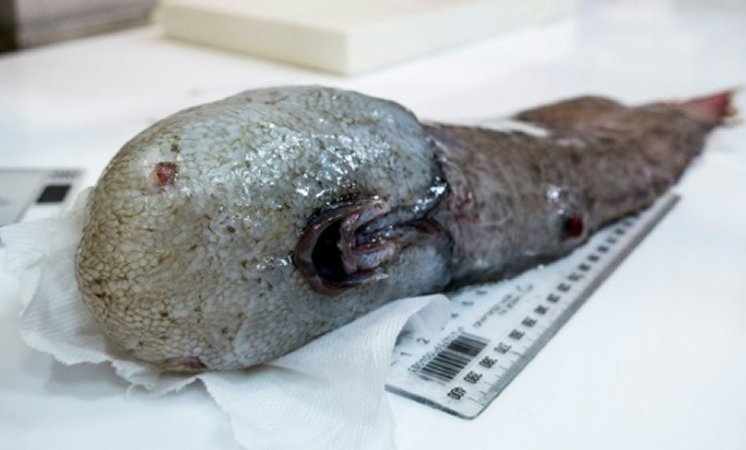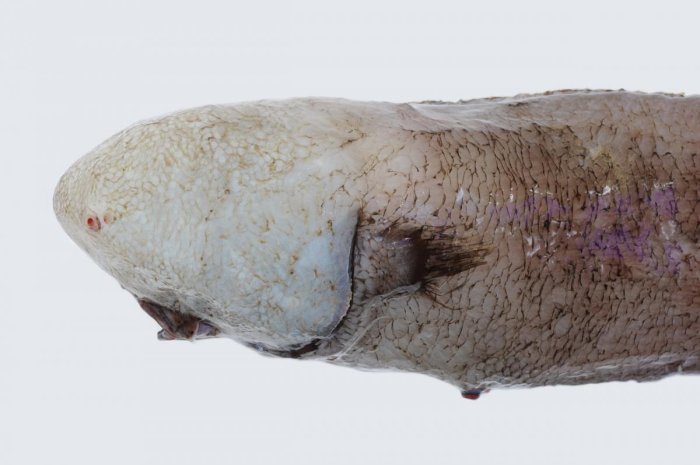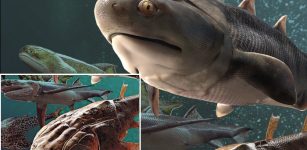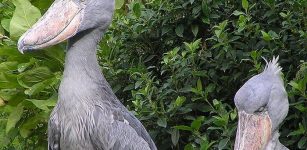Very Unusual Faceless Fish Re-Discovered After Being Missing Since 1873
MessageToEagle.com – Our oceans are full of wonderful and extraordinary life-forms. Scientists have re-discovered a very unusual faceless fish that has no eyes or a visible nose and it’s mouth is underneath.
It was last seen in 1873 and has now been found 4km below sea level in waters south of Sydney, Australia.
Researchers on “The Investigator”, a ship that is currently out on a scientific voyage are studying parts of the ocean never explored before. To their big surprise and joy they found several new species and the unusual faceless fish, which has only been recorded once before by the pioneering scientific crew of HMS Challenger off Papua New Guinea in 1873.
The 40cm fish was found near Papua New Guinea.

crew of HMS Challenger off Papua New Guinea in 1873. Image credit: CSIRO
“This little fish looks amazing because the mouth is actually situated at the bottom of the animal so, when you look side-on, you can’t see any eyes, you can’t see any nose or gills or mouth,” chief scientist Tim O’Hara from Museums Victoria said via satellite phone from the research vessel Investigator on Wednesday. “It looks like two rear-ends on a fish, really.”
See also:
Marine Creatures You’d Better Stay Away From
Legendary Sea Monster Exists: Icelandic Government Commission Says
Kraken Controversy – New Fossil Evidence Of Legendary Sea Monster
At such huge depths, it is so dark that creatures often have no eyes or produce their own light through bioluminescence, he added.
There are 27 scientists on board the vessel and according to latest reports they have found many new species that include bright red spiky rock crabs, spectacular bioluminescent sea stars and gigantic sea spiders as big as a dinner plate.
“The experts tell me that about a third of all specimens coming on board are new totally new to science,” O’Hara said. “They aren’t all as spectacular as the faceless fish but there’s a lot of sea fleas and worms and crabs and other things that are totally new and no one has seen them ever before.”

The research voyage is due to conclude on 16 June, but before researchers end their mission it’s still possible they discovered more amazing new animals.
O’Hara admitted the mission was demanding, but the data the science team gathered will help to improve the understanding of Australia’s deep-sea habitats, their biodiversity and the ecological processes that sustain them, O’Hara said.
“This will assist in its conservation and management and help to protect it from the impacts of climate change, pollution and other human activity,” he said.
MessageToEagle.com
Expand for references









